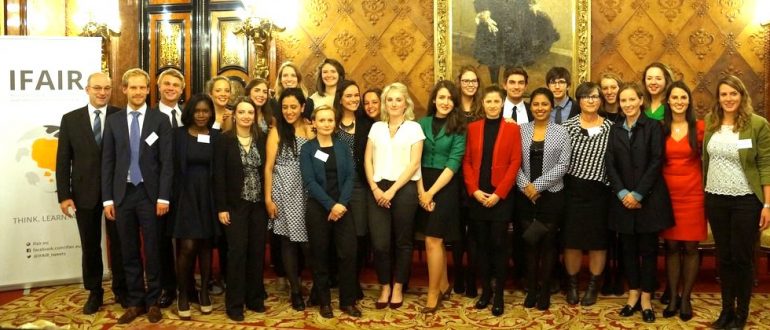
Latin America, the Caribbean and Europe Stand Side by Side
In order to deepen the relationships between Latin America and Europe, the IFAIR LACalytics Programme was established in 2015 and deals with in-depth analyses on current issues relating to Latin American politics, business, the environment and civil society as well as EU-LAC relationships in general (LAC is the abbreviation for Latin America and the Caribbean). What makes it special is that the focus is above all on young people in Latin America. There is good reason for this because the organisation took over IFAIR e.V. (Young Initiative on Foreign Affairs and International Relations) – an institution that seeks to get young people interested in foreign policy. Ambassador Dieter Lamlé, regional envoy for Latin America and the Caribbean at the Foreign Office, leads the programme. Since then, the LACalytics Programme supported by the Hamburg-based EU-LAC Foundation has attempted to create an environment that maintains and supports sustained partnerships between the two continents. As a result of the young perspective and the expertise of the author teams, the LACalytics Programme offers contributions that go beyond the information provided by other experts in the areas of science, media and diplomacy. The programme delivered 24 digital analyses on four macro-issues that were created through bi-regional teams of young thinkers from Europe and Latin America. The best contributions were briefly introduced in a printed and digital publication that was presented to the most important stakeholders of the EU-LAC partnership during the final conference in Hamburg between 22 and 25 October.
The Policy Papers
The interest of hundreds applicants from 33 countries was awakened in the very successful initial phase of LACalytics; there was then a lively exchange between young people from Europe and Latin America. Based on the various backgrounds of the authors, the contributions dealt with a wide range of subjects. These included, for example, inter-union risk division in the Eurozone and its function as a role model for Latin America or the integration issue. The use of a Scottish island as a role model for the Dominican Republic concerning the exploitation of wind energy as a new energy source was a fascinating analysis. Another article dealt with the comparison of conflict resolution mechanisms in Columbia and Ireland. The twelve best papers can be viewed in several languages, such as German, English, Spanish and Portuguese, on the www.ifair.eu website.
The Conference
The second phase of the LACalytics Programme was initiated by the arrival of the most successful participants at the final conference in Hamburg from 22 to 25 October. The largest port city in Germany was selected as a result of its long history of trading, exchanging and building significant relationships with Latin America. In addition, the EU-LAC Foundation and the participating German Institute of Global and Area Studies are also located here.
Intensive discussions took place during the four-day conference at Bucerius Law School, one of Germany’s most renowned universities. The conference was opened with an informative programme day that presented the individual papers of the twelve participating groups. The evening ended with dinner at the EU-LAC Foundation, which was represented by its chair Paola Amadei and Anna Barrera as well as Henrik Lesaar, head of the European Policy Unit at the Hamburg Senate. On the second conference day, the participants met in small groups to discover interesting parts of Hamburg. In the afternoon, the whole group then discussed the key question at this year‘s programme: “EU-LAC cooperation in the 21st century: How can the efforts be linked in a globalised world?”
On the third day there was a tour of the weekly newspaper DIE ZEIT, the GIGA Institute and Greenpeace’s head office. The participants held discussions on the role of the press in democracy and promoting international understanding. Other issues included the regional integration of Latin America and experience gained from the energy revolution in Germany as well as the extent to which these are applicable to LAC countries. The morning of the fourth and final conference day was taken up by a visit to the GFA Consulting Group to gain insight into development work between the EU and Latin America. The highlight was a final evening event at Hamburg’s Town Hall. After a welcome by the Hamburg Senate, the opening speech was given by IFAIR board member Theresa Lieb and a further welcome by Wiltrud Kern from the Foreign Office. The results were presented to various experts such as diplomats and representatives from the International Chamber of Commerce.
The Results
LACalytics has now been running for twelve months. The support of the EU-LAC Foundation was of key significance as they enabled the bi-regional author tandem to create the articles and the final conference in Hamburg gave the organisation public presence. The trilingual nature of the papers in Spanish, Portuguese and English must be particularly emphasised since this proved to be very helpful in reaching a broader audience in Latin America. After the successful conclusion of the programme, a new edition is currently being considered to be organized on the other side of the Atlantic. It will be exciting to see whether the programme can have an influence on higher diplomatic levels.
This article was published as part of IFAIR’s cooperation with the Diplomatic Magazine in its in January’s issue of 2017.
